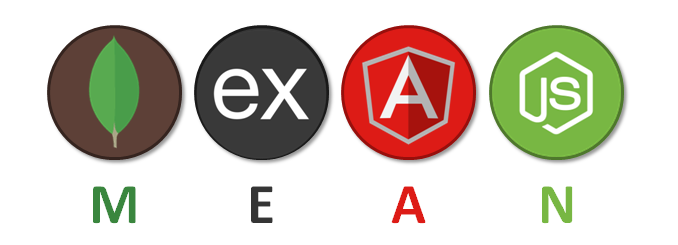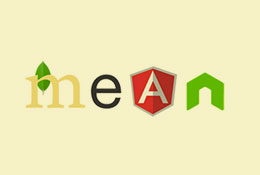✔ The MEAN stack is a JavaScript-based framework for developing web applications. MEAN is named after MongoDB, Express, Angular, and Node, the four key technologies that make up the layers of the stack.
✔ MongoDB — document database.

➢ What is web development?
➢ How websites work?
➢ Advantages of learning web development
➢ History of web development
➢ ourse and Projects Overview
➢ What is HTML?
➢ Structure of Webpage
➢ HTML Tags
➢ Adding and formatting texts, title, paragraph, body
➢ Lists – Ordered/Unordered
➢ Images
➢ Forms
➢ Node setup
➢ Links
➢ Tables
➢ Iframes, Videos
➢ Anchor tags
➢ HTML Divs
➢ CSS Introduction
➢ Inline vs Internal vs External styling
➢ CSS Display
➢ Project 1 - To-do App – Frontend using basic HTML/CSS
➢ CSS Backgrounds, Borders, Margins, Padding
➢ CSS Font Styling
➢ Stylings Lists
➢ Styling Tables, Forms
➢ Gradients
➢ Font Awesome
➢ Tool tips
➢ Buttons
➢ Transitions, Transformation, Animations
➢ Box sizing
➢ Flex
➢ Grid
➢ Project 1 - To-do App – Enhance Frontend using CSS
➢ Bootstrap containers
➢ Tables, Images, Colors
➢ Alerts, Buttons
➢ Spinners, Cards
➢ Pagination, Drop Down
➢ Carousel
➢ To-do App – Develop To-do App Frontend using Bootstrap
➢ GitHub Overview
➢ Introduction to JavaScript
➢ Variables, scoping, Data type
➢ Strings and Numbers
➢ Operators and loops
➢ Functions
➢ Project 1 – Add Functionalities to To-do App
➢ Arrays
➢ Linked List
➢ Stacks
➢ Queues
➢ Maps
➢ Hashing
➢ Understanding and working with DOM
➢ Developer tools in Browsers
➢ JQuery
➢ Project 2 – Add Functionalities to Blog
➢ Prototypes
➢ Closures
➢ Local Storage
➢ Ajax
➢ Promises
➢ Project 3 – Dice Roller Game using Animation and JavaScript
➢ ES5 vs Es6 vs Es7
➢ Event loop in JavaScript
➢ Introduction to TypeScript
➢ A Conceptual Overview of Angular 2
➢ Installing Git and Node
➢ Creating Your First Component
➢ Using the Angular CLI
➢ Creating Your First Data-bound Component
➢ Using External Templates
➢ Communicating with Child Components Using @Input
➢ Communicating with Parent Components Using @Output
➢ Using Template Variables to Interact with Child Components
➢ Styling Components
➢ Exploring Angular’s CSS Encapsulation
➢ Interpolation, Property Bindings, and Expressions
➢ Event Bindings and Statements
➢ Repeating Data with ngFor
➢ Handling Null Values with the Safe-Navigation Operator
➢ Hiding and Showing Content with ngIf
➢ Hiding Content with the [Hidden] Binding
➢ Hiding and Showing Content with ngSwitch
➢ Styling Components with ngClass
➢ Styling Components with ngStyle
➢ Introduction
➢ Why We Need Services and Dependency Injection
➢ Creating Your First Service
➢ Adding Multiple Pages to Your App
➢ Adding Your First Route
➢ Accessing Route Parameters
➢ Linking to Routes
➢ navigating from code
➢ Introduction
➢ Using Models for Type Safety
➢ Creating Your First Template-based Form
➢ Using the Data from Your Template-based Form
➢ Validating Template-based Form
➢ Validating Reactive Forms
➢ Using Built-in Pipes
➢ Creating a Custom Pipe
➢ Sorting and Filtering Overview
➢ Creating a Filtering Display
➢ Filtering Data
➢ Using Third Party Global Services-The Problem
➢ Angular Dependency Injection Lookup
➢ Using the @Inject Decorator
➢ The useClass Provider
➢ Moving Data Storage to the Server
➢ Listening to Resolved Data Changes
➢ Integrating Authentication with the Server
➢ Persisting Authentication Status Across Page Refreshes
➢ Saving User Data to the Server
✔ you should have a basic understanding of fundamental languages used by the browser and the server.
✔ You should be confident in designing and stlying web pages using HTML & CSS.
✔ Fundamental concepts of Javascript should be clear and should also be familier with DOM(Document Object Model) in browser
✔ Basic understanding of Node/express will speed up the learning process but is not recommended.

✔ 48 hours on-demand video
✔ 50 articles
✔ 95 downloadable resources
✔ 13 coding exercises
✔ Full lifetime access
✔ Access on mobile and TV
✔ Assignments
✔ Certificate of completion
✔ Closed captions